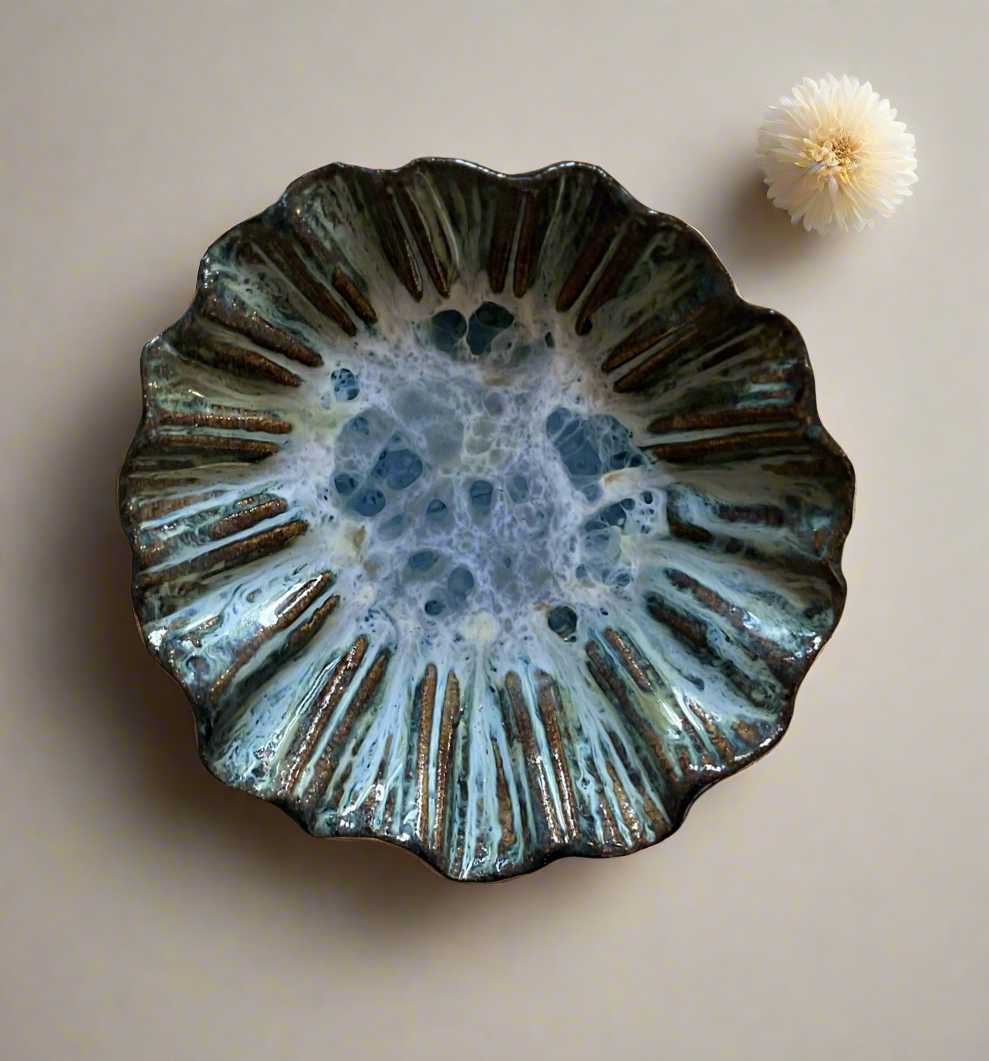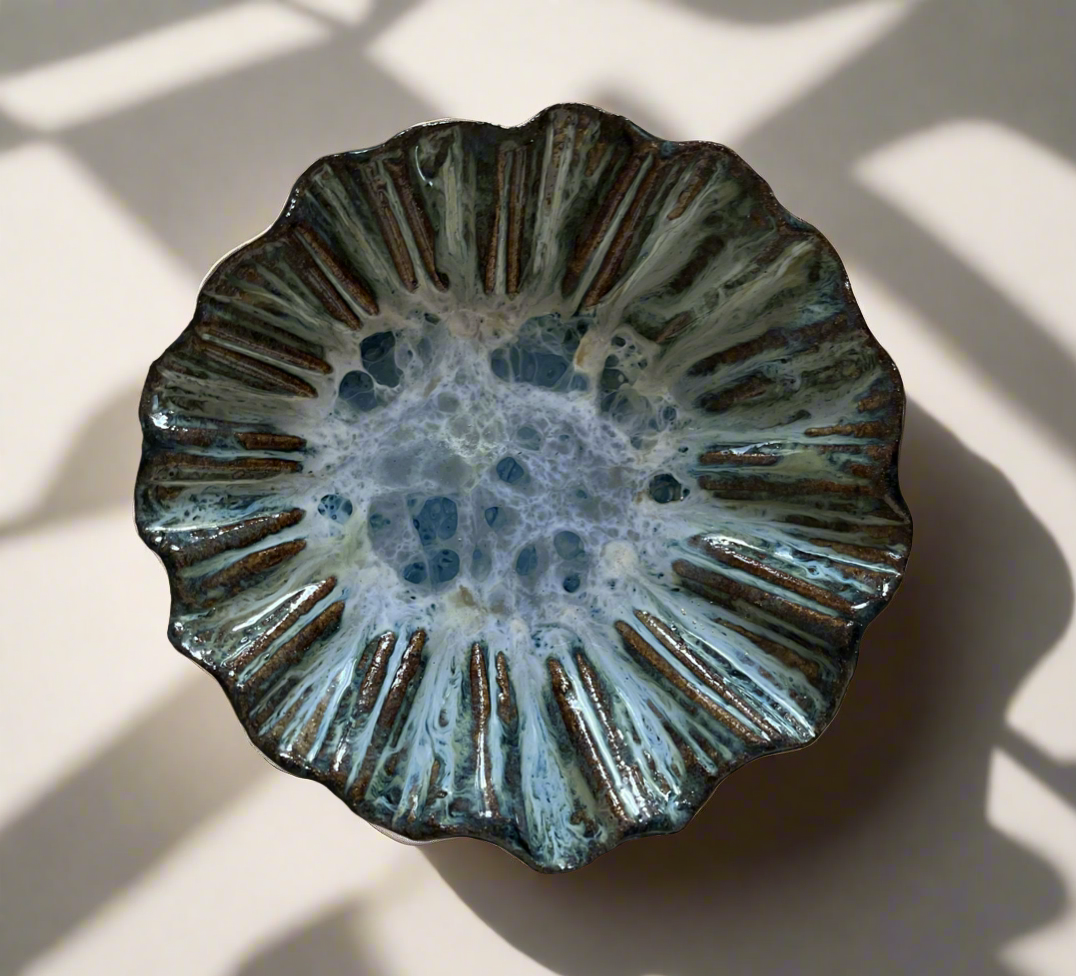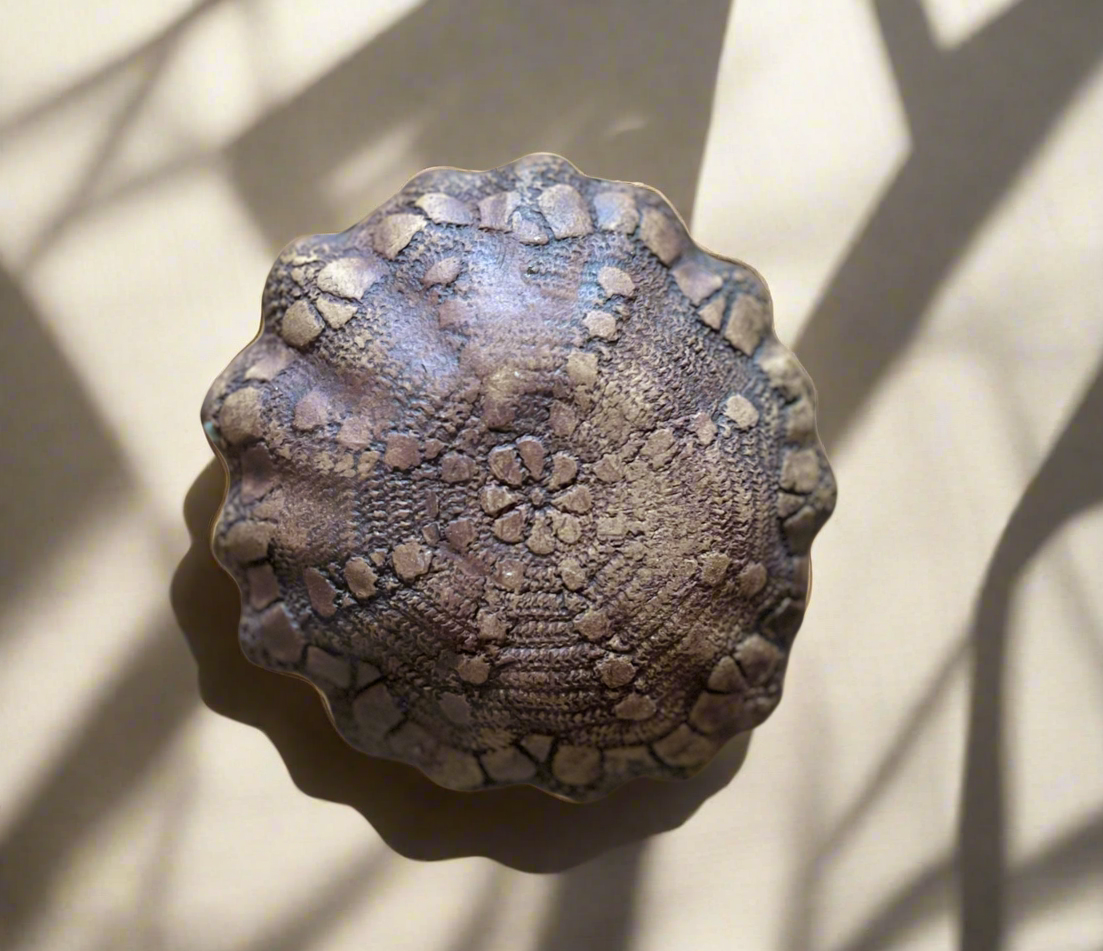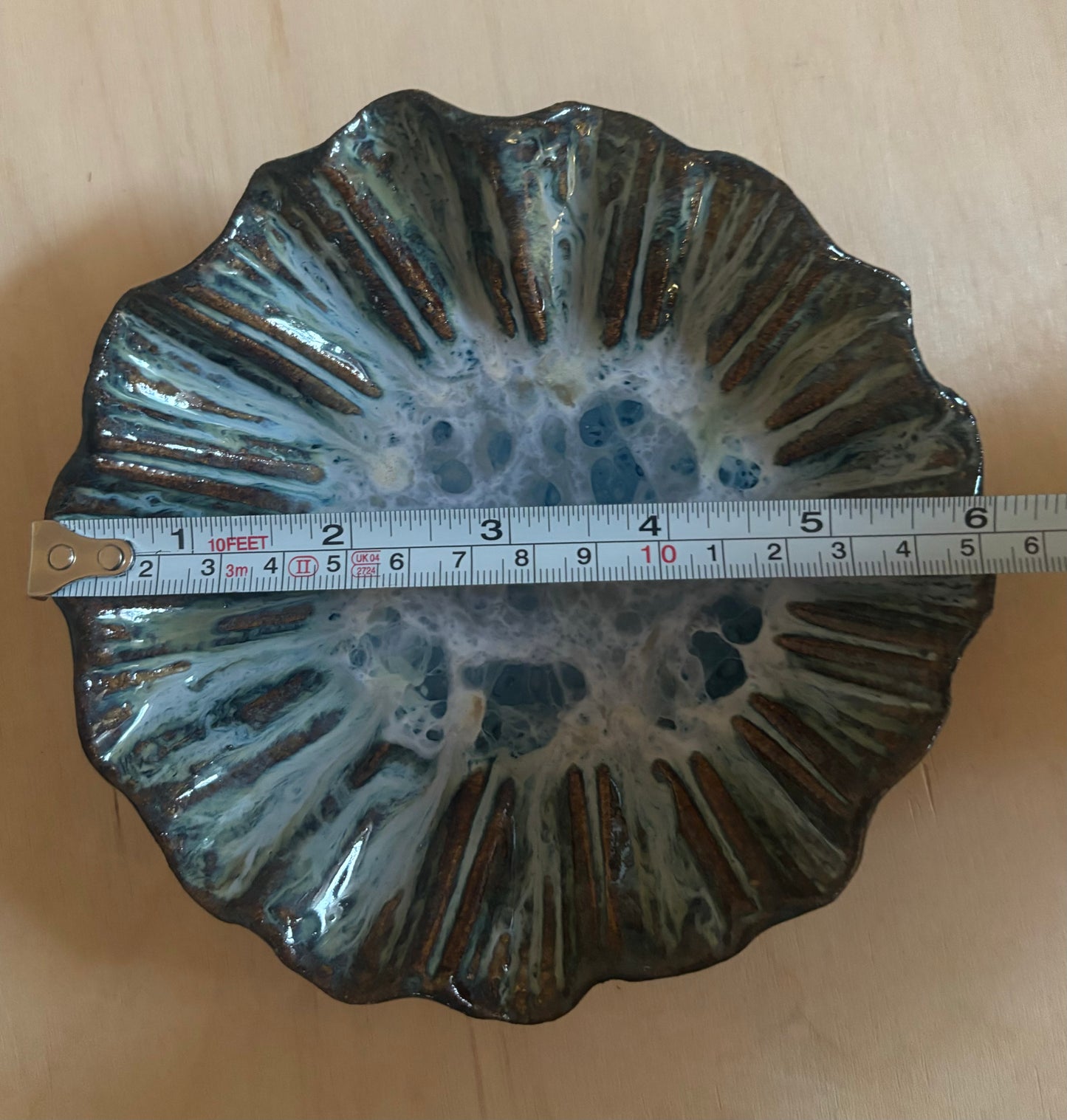Head on a Platter
Flower plate - small
Flower plate - small
Couldn't load pickup availability
Handbuilt flower plate, decorated in multiple layers of blue and green reactive glazes with the odd drop of copper for fun. The result is this mesmerising beauty - art within art.
This plate turned out to also be one of the perfect examples of why I insist reactive glazes are magic. When layered at the right thickness, the right order, and the right angle to flow yet pool where needed... you have a living, moving picture. Comparing these photos, for example - they were all taken at the same time, no filters etc. Yet, the natural light, the angle, everything changes your picture.
Over the years, I've made / kept some of my work to use for ourselves too. In the garden, you'd get these spectacular blue explosions when in the bright sunlight. Then, when I use them inside again, often with a glass of wine, some nibbles and a book in hand (not all in the same hand, mind you...), it's calmer, dreamier, softer somehow, but still dramatic. I love this magic.
Aaaaanyway, back to describing again. 😁
I rolled out white stoneware clay, then draped it over a plaster mould I made to create the basic flower shape. Whilst the clay was still there and had the plaster to support the inside of the plate, I pressed a hand crocheted doily over it to create the pattern underneath. After settling for an hour or so, I removed the now firm plate from the mould and smoothed and cleaned up the rim and any rough areas.
Now it was ready for the drying shelf, where, depending on size, pieces stay from 2 - 5 weeks to slowly reach what is known as "bone dry" stage. Bone dry pieces can then undergo their first firing to reach 1000°C. After 48 hours, the kiln is usually cool enough to unpack, and glazing can start the next morning.
I alter the thicknesses, types and patterns of glazing as I go along - sometimes you just kind of "know" when you've got the bottles and brushes in hand, but as a rough guess I usually use 9 layers of glaze.
To highlight the pattern on the outside of this plate, I used a red iron oxide wash for contrast.
Once done, pieces dry naturally overnight, and then go into the kiln for a second firing - this time up to 1220°C, with a slow cool to ensure best pattern creation and reduce chances of thermal shock.
And that is pretty much it. Sure it takes weeks to have one plate ready, but it's totally worth it and you can't help but smile when you hold it.
Dishwasher, oven and microwave safe
Approx* measurements: 15 cm diameter / 3 cm height
*Due to the handmade nature of each item, measurements can vary up to 1cm
Share










